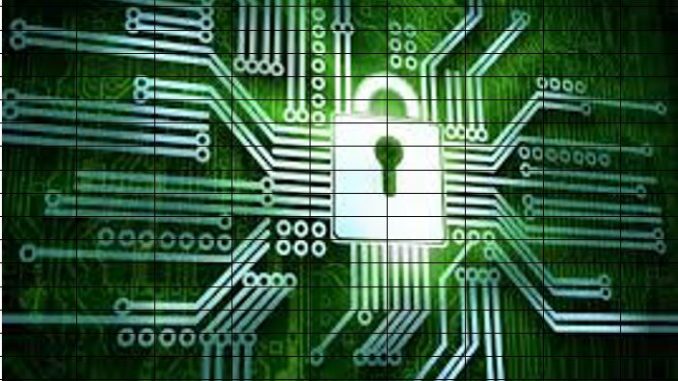
In numerical coding systems that we discovered to exist in the Qur’an, it is expressed as “Numerical coding” because it is coded using only numbers. The numerical coding systems in the Qur’an is like stamp that printed by Allah. So, this is the book of Allah, it means that it cannot be imitated or changed. The purpose of the numerical coding systems in the Qur’an is to prove that the Qur’an is preserved, that it is unchanged and cannot be done by human hand, that it is extraordinary, in other words it is the word of Allah.
Numerical coding systems are interconnected eachother, they form a chain of possibilities. The rings of these chain of possibilities become longer and longer as they become connected, and in the end we encounter a very clear mathematical structure that human beings cannot do. The most impressive example is the coding of the Ha-Mim group.
While defining the structure of systems, deduction method has been followed. When these systems are accepted by the scientific authority, the Qur’an is extraordinary and the word of Allah will be scientifically accepted. There is very limited in the current Qur’an, the speculation will come to end and a non-intervening, mathematically protected structure will occur in the future. Therefore, we see the work of these systems to be accepted by the scientific authority as a great service for the Qur’an and Islam.
Even and Odd Numerical Symmetry System:
The numerical symmetry considers in the Qur’an the numbers of Surah (1, 2, 3, … , 114) and the numbers of verse (7, 286, 176, … , 6) as a numerical set and by separating the numbers according to even and odd in these clusters into subgroups is a system. This observation was first made by an Iranian university student named Koroş Cemnişan. System results is extremely interesting to show that the number of verses and their places in the cluster, according to their Even and Odd status, is an extraordinary phenomenon. This structure is a good coding example in terms of preserving the number of verses of the Surahs and their places in the cluster (Surah numbers), in order to prevent them from changing. The number of elements of sub-sets that occur as a result of the system are the numbers 60 and 54, again the numbers 30 and 27 (30 + 27) 57, which are subsets of these numbers, in addition, the numbers of the cluster elements, 114, 6555 and 6348 (6346 + 2) => (6234 + 112 + 2), which are used by other systems that show the numbers are relevant with each other. Even and Odd numerical symmetry system will be discussed in detail in the following sections.
19 Numerical Coding System:
During the entry of the Qur’an to the computer was discovered in 1974 by the Rashad KKhalifa, an Egyptian biochemistry specialist, in the USA and is the numerical coding system described in 1974. It has a structure that predicts that the numerical data in the Qur’an is 19 times the number. By using modular arithmetic we can define this system accepts that the numerical data of Qur’an is exactly divided into 19 “the Qur’an numerical data≡ 0 (mod 19)” in this way. If we consider that the operations on the numeric data are purely arithmetic operations, we have difficulty understanding the system. All of these processes are an encoding process. There is a symbolic coding structure. “≡ 0 (mod 19)” is thought that the structures that take the equivalence prove that the Qur’an is preserved, not changed and that it is extraordinary, that it cannot be done by human hand. Details will be discussed in the following sections. For more info : http://19.org/ , “19 Nineteen” – Ebip Yüksel’s book.
7-19 TwinCode system:
In the 7 & 19 TwinCode system, which was discovered by Imran Akdemir in the Qur’an, the heritage of 19 numerical coding systems was taken and the coding structure was developed by adding 7 coding numbers to the system. In the system is accepted that the numerical data of the Qur’an could exactly divided into numbers 7 and/or 19. As we described above with modular arithmetic, we can briefly describe this system as “≡ 0 (mod 7) and/or ≡ 0 (mod 19)”. As with the 19 numerical coding system, symbolic coding structures show up. “≡ 0 (mod 7) and/or ≡ 0 (mod 19)” is thought that the structures that take the equivalence prove that the Qur’an is preserved, not changed and that it is extraordinary, that it cannot be done by human hand. Details will be discussed in the following sections. For more info : www.ikizkod.com , “7&19 İkizKod” – İmran Akdemir’s book.
7 and 19 Duo Numerical Coding System:
In my opinion, the numerical system in the Qur’an includes “≡ 0 (mod 7) and/or ≡ 0 (mod 19)”, as well as “≡ 2 (mod 7) and/or ≡ 2 (mod 19)”equivalents and even “≡ 7 (mod 19)”equivalents. In cases where the number of coding results in 0 (Zero) and gives the remainder of 2, the cases where it gives the remainder of 2 should be used as “and/or” on the basic data and the remaining 7 should be added as “and” on the verses, not as decisive, but as supporting. In this way the system is more stable. I call the new system “7 and 19 Duo Numerical Coding System” in the Qur’an by making corrections and additions to existing systems (19 numerical coding system and 7&19 TwinCodes system). The terms expressed in this book do not bound the 19 numerical coding system and 7&19 TwinCodes system. Let’s try to explain the details of the systems we are talking about now.

Leave a Reply